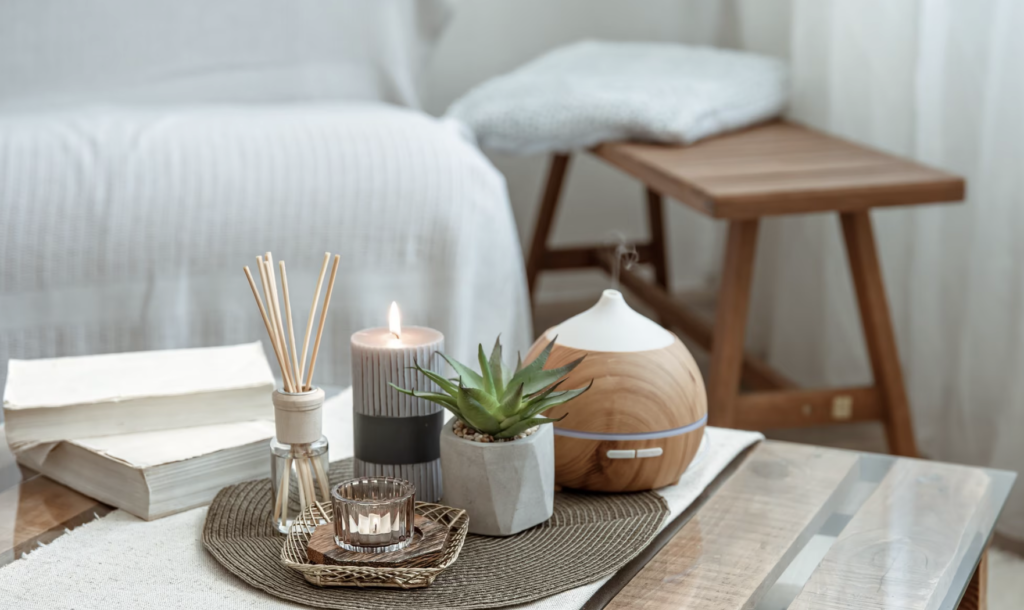Maintaining optimal humidity levels in our indoor spaces is crucial for our comfort and well-being. As the seasons change, many of us turn to humidifiers to add moisture to the air and combat dryness. However, placing a humidifier in the right location plays a vital role in its effectiveness and the overall comfort it provides.
Whether you’re using a humidifier for better sleep, respiratory health, or to protect wooden furniture, understanding the ideal placement can make a significant difference in achieving the desired results. In this article, we will explore the various factors to consider and guide you on where your humidifier should be placed for maximum efficiency and comfort.
Factors to Consider for Humidifier Placement
Proper placement of a humidifier is essential to ensure optimal performance and effectiveness in maintaining the desired humidity levels in your indoor spaces. Consider the following factors when determining where to position your humidifier:
- Room size and layout:
- Take into account the square footage of the room where you plan to use the humidifier. Larger rooms may require a humidifier with higher output or multiple units strategically placed;
- Consider the layout of the room, including the presence of obstacles such as furniture or partitions that could obstruct the airflow and distribution of moisture.
- Distance from sleeping or living areas:
- If you intend to use a humidifier in your bedroom or living room, place it at an appropriate distance from your sleeping or seating areas. Positioning it too close can result in excessive moisture directly impacting your comfort.
- Proximity to moisture-sensitive items:
- Avoid placing the humidifier near objects that are sensitive to moisture, such as electronics, artwork, musical instruments, or wooden furniture. Excessive humidity can damage these items, so maintain a safe distance to prevent any potential harm.
- Accessibility for maintenance and refilling:
- Consider the ease of access for routine maintenance tasks such as cleaning and refilling the humidifier’s water tank. Choose a location that allows convenient access and minimizes the risk of spills or accidents during maintenance.
By carefully considering these factors, you can ensure that your humidifier is positioned optimally for efficient and effective operation, providing you with the desired level of comfort and humidity in your living spaces.

Humidifier Placement: Best Practices for Optimal Comfort
When it comes to placing your humidifier, following a few best practices can make a big difference in maximizing its effectiveness and ensuring your comfort. Here are some relaxed tips to help you position your humidifier strategically and get the most out of its moisture-adding capabilities:
- Bedroom Bliss. For a restful night’s sleep, keep your humidifier within arm’s reach of your bed. Placing it on a nightstand or nearby surface ensures easy access and control during the night. Just make sure to position it at a safe distance from your bedding and furniture to avoid any unwanted dampness;
- Centralize in Living Areas. When it comes to common spaces like the living room, find a central location for your humidifier. This allows for even distribution of moisture throughout the room, creating a more comfortable living environment. Be mindful not to place it directly in front of seating areas or electronics to prevent discomfort or potential damage;
- Office Oasis. If you work or study from home, consider placing a humidifier near your workspace. Dry air can lead to discomfort and static electricity, so having the humidifier nearby can help combat these issues. Just be sure to position it in a way that directs the mist towards the general area without affecting sensitive electronics or important documents;
- Go with the Flow. Take a moment to observe the layout of the room and consider the natural airflow patterns. Position your humidifier where it can effectively disperse moisture throughout the space. Avoid placing it near air vents, windows, or doors, as these areas can disrupt the airflow and hinder the humidifier’s performance;
- Monitor and Adjust. Invest in a hygrometer to accurately monitor the humidity levels in the room. Aim for a humidity range of 30% to 50% for optimal comfort. Based on the readings, make adjustments to the placement of your humidifier if needed. This allows you to maintain the desired humidity levels and ensure a pleasant environment.
By following these relaxed best practices, you can make the most out of your humidifier and enjoy the benefits of balanced humidity levels in your home or office.
Remember to tailor the placement to suit the specific needs of each area, and don’t hesitate to make adjustments as necessary. Create your own oasis of moisture and experience the comfort and well-being that a well-placed humidifier can bring.
Humidifier Placement for Specific Needs
Using a humidifier for specific purposes, such as improving respiratory health or protecting wooden furniture and instruments, requires careful consideration of its placement. Let’s delve deeper into how you can strategically position your humidifier to address these specific needs:
A. Respiratory health benefits:
- Ideal placement for alleviating dry nasal passages and throat:
- Place the humidifier in the bedroom or areas where you spend a significant amount of time, such as the living room or home office. These locations allow for consistent exposure to the moist air emitted by the humidifier;
- Consider positioning the humidifier near your bedside table or on a nearby shelf, allowing the mist to disperse gently as you sleep. This placement is especially beneficial for alleviating dryness in nasal passages and soothing a scratchy throat upon waking up.
- Creating a soothing environment for respiratory conditions:
- If you or a family member suffer from respiratory conditions like asthma or allergies, it’s important to place the humidifier in the room where you spend the most time. This could be the living room, home office, or bedroom, depending on your daily activities;
- Be mindful of the direction of airflow from the humidifier. Position it in a way that allows the mist to circulate throughout the room without blowing directly onto your face or exacerbating respiratory symptoms.
B. Protecting wooden furniture and instruments:
- Proper humidification to prevent cracks and warping:
- Identify the rooms that house valuable wooden furniture, such as the living room, dining room, or study. Placing the humidifier in these areas helps maintain an optimal level of humidity to prevent the wood from drying out and developing cracks or warping;
- Consider the size and output capacity of your humidifier. Larger rooms may require multiple humidifiers strategically placed to ensure sufficient coverage and humidity distribution.
- Locating the humidifier strategically near vulnerable items:
- Assess the specific wooden items that require extra protection, such as antique furniture, musical instruments, or delicate woodwork. Position the humidifier in close proximity to these items to create a localized humidification zone;
- Maintain a safe distance between the humidifier and the vulnerable objects to prevent any direct moisture exposure. Regularly monitor the humidity levels using a hygrometer to ensure they remain within the recommended range.
Remember, regardless of the specific need, it’s crucial to monitor the humidity levels in your space and adjust the placement of the humidifier as needed. Fine-tuning the positioning ensures you strike the right balance between achieving the desired outcomes and avoiding any potential drawbacks associated with excessive moisture.
By taking these factors into account and implementing the appropriate placement strategies, you can optimize the benefits of your humidifier for respiratory health and safeguard your cherished wooden furniture and instruments. Enjoy the enhanced comfort, improved air quality, and long-term preservation that proper humidifier placement can bring to your living environment.
Choosing the Right Humidifier for Your Needs
Selecting the right humidifier is just as important as proper placement. With various types and models available, it’s essential to consider your specific needs and preferences before making a purchase. Here are some factors to keep in mind when choosing a humidifier:
- Room Size: Determine the square footage of the room or area you intend to humidify. This information will help you select a humidifier with the appropriate coverage capacity. Larger rooms may require humidifiers with higher output or multiple units;
- Humidification Method: Humidifiers come in different types, such as evaporative, ultrasonic, or steam humidifiers. Each method has its pros and cons. Consider factors like noise level, energy efficiency, ease of maintenance, and personal preferences when selecting the most suitable humidification method for your needs;
- Maintenance and Filter Replacement: Consider the maintenance requirements of the humidifier you’re interested in. Some models require regular filter replacement or cleaning, while others have low-maintenance features like self-cleaning or antimicrobial properties. Choose a humidifier that aligns with your maintenance preferences and lifestyle;
- Budget: Set a budget for your humidifier purchase. Consider the initial cost, as well as any long-term expenses for maintenance, filter replacements, and energy consumption. It’s important to find a balance between affordability and the features you need.
By taking these factors into account, you can select a humidifier that suits your specific needs, preferences, and budget. Remember to compare options, read product descriptions carefully, and make an informed choice to ensure you invest in a humidifier that will serve you well in the long run.
Maintenance and Safety Considerations
Proper maintenance and safety practices are essential when using a humidifier. By incorporating regular cleaning, adhering to safety precautions, and monitoring humidity levels, you can ensure the longevity of your humidifier and create a safe environment for yourself and your loved ones. Let’s explore these maintenance and safety considerations in more detail:
A. Regular cleaning and maintenance routine:
- Set a schedule for cleaning your humidifier to prevent the buildup of mineral deposits, mold, and bacteria. Refer to the manufacturer’s instructions for specific cleaning guidelines;
- Empty and refill the water tank daily to prevent stagnant water and bacterial growth. Using distilled or demineralized water can help minimize mineral deposits and extend the lifespan of your humidifier;
- Remove any excess moisture from the humidifier’s surfaces and ensure they are completely dry before storing or using it again. This prevents the growth of mold and mildew.
B. Safety precautions for electrical appliances:
- Always unplug the humidifier before performing any maintenance tasks, such as cleaning or refilling. This prevents the risk of electric shock or damage to the device;
- Place the humidifier on a stable, flat surface away from the reach of children or pets. This reduces the chances of accidental tipping or tampering;
- Check the power cord regularly for any signs of damage, such as fraying or exposed wires. If you notice any issues, replace the cord immediately to avoid potential hazards.
C. Monitoring humidity levels and adjusting placement as needed:
- Invest in a reliable hygrometer to monitor the humidity levels in your home or office. This allows you to maintain a comfortable and healthy environment;
- Adjust the placement of your humidifier based on the readings from the hygrometer. If the humidity levels are consistently too high or too low, reposition the humidifier accordingly to achieve the desired range;
- Avoid over-humidifying your space, as excessive moisture can promote the growth of mold, mildew, and dust mites. Finding the right balance is crucial for maintaining optimal humidity levels.
By incorporating these maintenance and safety practices into your humidifier routine, you can ensure its efficient and safe operation. Regular cleaning and proper care not only extend the lifespan of your humidifier but also contribute to maintaining good indoor air quality. Additionally, by monitoring humidity levels and adjusting placement as needed, you can create a comfortable and healthy environment for yourself and your loved ones.
Remember, a well-maintained and safely operated humidifier enhances the benefits it provides, giving you peace of mind and a more enjoyable experience in your living spaces.
Conclusion
In conclusion, proper humidifier placement is crucial for optimizing comfort, addressing specific needs, and ensuring the longevity of your device. By considering factors such as room size, airflow patterns, and specific requirements like respiratory health or protecting wooden furniture, you can strategically position your humidifier to achieve the desired outcomes. Remember to regularly clean and maintain your humidifier, follow safety precautions, and monitor humidity levels to create a healthy and comfortable living environment.
With the right placement and proper care, your humidifier can make a significant difference in alleviating dryness, improving air quality, and enhancing overall well-being. Take the time to assess your needs and follow the best practices outlined in this article to make the most out of your humidifier and enjoy the benefits it brings.
FAQ
Absolutely! Placing your humidifier within arm’s reach of your bed, such as on a nightstand or nearby surface, allows you to easily access and control it during the night. Just ensure that the humidifier is positioned at a safe distance from your bedding to avoid any dampness or discomfort.
It is best to avoid placing your humidifier near air vents or windows. These areas can disrupt the airflow and may affect the humidifier’s ability to evenly distribute moisture throughout the room. Find a central location in the room for optimal humidity distribution.
Regular cleaning is essential to prevent the buildup of mineral deposits, mold, and bacteria. It is recommended to clean your humidifier at least once a week, or as per the manufacturer’s instructions. Be sure to empty and refill the water tank daily and keep the surfaces dry to avoid mold and mildew growth.
Yes, over-humidifying your space can lead to problems such as mold growth, dust mites, and excessive moisture. It is important to monitor humidity levels using a hygrometer and adjust the placement of your humidifier accordingly to maintain a comfortable humidity range between 30% to 50%.
Yes, it is generally safe to leave the humidifier on overnight, especially if it has an automatic shut-off feature when the water level is low. However, it is important to follow safety precautions and ensure the humidifier is placed on a stable surface away from any potential hazards.
Remember, if you have specific concerns or questions about your humidifier, it is always best to refer to the manufacturer’s instructions or consult with a professional for guidance.


